Denver Colorado Wildlife Lawyers Blog
Wildlife Laws Different, But Same Across States
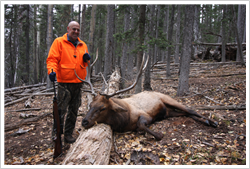

As the holidays come and go, many outdoorsmen will travel with their families and friends to hunt in neighboring states. This presents the hunter with a whole new world of opportunity and risk.
For instance, a Kansas hunter who is used to setting out a bag of corn in order to hunt the deer that come to feed over it will find himself in trouble in both neighboring states of Colorado and Missouri. Colorado, for instance, only allows the use of bait for the taking of furbearers while Kansas allows the use of bait in the pursuit of deer and turkey.
In Missouri, many counties, including those sharing a border with Kansas, have in place "antler restrictions". These restrictions prohibit hunters from harvesting buck whitetail deer with less than four antler points on at least one side. This restriction is the topic of hot debate among big game hunters in Missouri who doubt its effectiveness at producing the large trophy animals as it was intended to do. Deer is illegal under this provision in Missouri, but would be legal just across the county line in Kansas or Nebraska.
Even waterfowl hunting differs from state to state, while being heavily influenced by the federal guidelines. Duck limits differ from state to state, depending on the usual available species and their abundance. Colorado has a daily limit of 5 Canada Geese per hunter and Kansas has a daily limit of 6 per hunter. Even shooting time can be different, with Kansas teal season shooting time being half-hour before sunrise and Missouri’s teal season shooting time being at precisely sunrise.
In short, if you travel to hunt, make sure you research thoroughly the laws of the state you’re traveling to. Even a small violation could ruin an otherwise phenomenal hunting experience. If you’re accused of a hunting violation or receive a hunting ticket, let a Wildlife Lawyer help you keep your voice and give you your day in court. You have rights and a Wildlife Lawyer can help protect them.
Size Matters
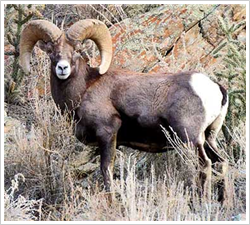

In 1995, two individuals stalked a trophy bull elk in Estes Park, Colorado, and illegally killed him and three other elk. That one elk was affectionately referred to as Samson by Estes Park residents and his death had a profound impact not only on them, but Colorado wildlife laws.
Referred to as "Samson’s Law", a regulation was enacted placing heavy fines on hunters accused of illegally hunting, taking, or possessing big game in Colorado assigning an additional surcharge. Under this law, fines are as follows: for each bull elk with at least six points on one antler beam, $10,000, for each mule deer buck with an inside antler spread of at least twenty-two inches, $10,000, for each whitetail deer buck with an inside antler spread of at least eighteen inches, $10,000, for each bull moose, $10,000, for each bighorn sheep with a horn length of at least one-half curl, $25,000, for each mountain goat, $10,000, for each pronghorn antelope with a horn length of at least fourteen inches, $4,000.
Effectively, Samson’s Law places stiffer penalties on those who illegally hunt trophies in the state. For some, who find themselves with the harvest of a lifetime and innocently made a small mistake, these penalties can seem stiff.
If you find yourself facing a fine under Samson’s Law, consult with a Wildlife Lawyer before making any decisions. Our attorneys know that mistakes can happen and will help guide you through the legal process.
Non-Hunting Crimes Lead to Hunting Suspension
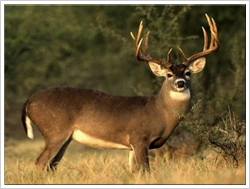

In Colorado generally, hunting-related offenses earn the offender "points" on his license. Handed down in 5 point increments (each offense being worth a separate number of points depending on severity), when the total points accumulated in a 5 year period reaches 20, a hearing is conducted to determine the length (if any) of suspension of that individual’s hunting or fishing privileges.
However, any other crimes committed while in the act of hunting or fishing can lead to a hearing as well. Crimes such as littering, assault, animal cruelty, etc. can all lead to a suspension hearing by the Department of Wildlife. While these crimes do not have any point values associated with them, it is in the discretion of the State Hearing Examiner to look at the complete case file and determine if the crime should lead to a suspension of privileges.
As with any time you are accused of a crime, you should seek the advice of an attorney who knows and understands your situation and can help to preserve your rights and give you your voice in court. Speak with a Wildlife Lawyer at Welsh Law, LLC to find out how we can help you through the process.
Hevi-Shot Recall Announcement
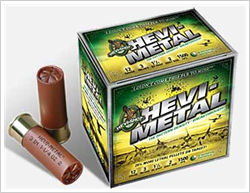

Ammunition manufacturer Hevi-Shot has recalled several boxes of its popular shotgun shells. The company has concluded an investigation that revealed sub-standard wads in its 12 gauge, 3 inch, Hevi Metal and Hevi Steel shotshells that could lead to damage or injury.
While the shells themselves do not pose a significant risk, the wads may become lodged in the barrel after firing. Obviously, this presents a problem for hunters who do not check their barrel after firing each shot and could lead to severe injury if the barrel is not cleared before firing again.
For more information on the recall, see the notice issued by the company at the link provided below, or call one of the experienced attorneys at Welsh Law, LLC to discuss any problems you’ve experienced.
http://www.hevishot.com/media/Letter_to_our_consumers_11-20-14.pdf
Kansas Pheasant Hunting Opener This Weekend
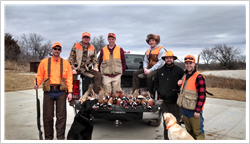

The pheasant season in Kansas opens this weekend and hunters will be out in force. So too, will the Kansas Game Wardens. With many hunters making their annual pilgrimage to the Sunflower State this weekend, opportunities will abound.
A long-held belief among many is the "if it’s not marked with ‘No Hunting’ then it’s perfectly legal to hunt." I myself have heard this throughout my years of pheasant hunting in Kansas and cannot stress enough how untrue it is. I have seen folks receive citations for trespassing when abiding by this age-old bit of falsehood. Always ask permission from landowners. If you can, have a form ready for them to sign that allows you access to their fields for pheasant hunting. NEVER drive, walk, hunt, or shoot birds on property where you don’t have permission to hunt. Keep your dogs and that occasional stray hunting buddy on the right side of the fence.
Often times a combination hunt is warranted in Kansas. With record populations of ducks making their migration through Kansas, you are almost guaranteed to find a good area for duck hunting while walking for pheasants. Remember though, that shooting ducks or geese with lead shots is illegal. If you know you’ll come upon some ducks at the end of a pheasant field, it’s better to not have any lead shot in your possession whatsoever. Pheasants and quail can be harvested with steel, and the ticket is not worth the risk.
Kansas has one of the finest public hunting programs in the nation with its Walk-In Hunting Area program. Pick up or download an atlas that will guide you to numerous CRP, crop, and wetland areas available to the public for hunting. However, if you arrive to a field full of standing crops, remember to not disturb the unharvested crops while hunting. Any areas where this may be an issue will usually have more information available.
As always, you have rights as a hunter and a lawyer with Wildlife Lawyers can help to protect those rights. You should always consult a lawyer before speaking with a wildlife officer outside of the routine license checks. A qualified, Kansas-licensed, Wildlife Lawyer can help make sure a stressful experience with a violation doesn’t ruin a beautiful weekend in the Midwest.
November Brings Multiple Hunting Opportunities/Risks
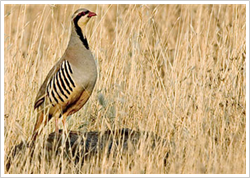

With Halloween over, thoughts for a lot of folks turn to Thanksgiving and Christmas (if your local store doesn’t already have the garland and plastic trees on display). For hunters and outdoorsmen, November brings several different species into season across the United States and with those increased opportunities, come risks.
Canadian Geese and duck migrations will begin to peak in November and waterfowl enthusiasts will head to the blinds. However, those lucky few that get their limit within a couple of hours may get the opportunity to chase pheasants, quail, and chukars for the rest of the day with most states being in full upland mode by at least mid-November.
A cautionary note from one mixed-bag lover to another: Be extra vigilant about the type of shells you’re carrying into the field. It is much too easy to let a lead pheasant load or two slip into your waterfowl blind bag and mix them up when changing gear in your truck. Possession of lead shot during a waterfowl hunt is illegal and could earn you a violation regardless of your intent to bring it with you.
White-tailed deer and Elk will be in full rut mode very soon and hunters will be in their stands or blinds waiting on a trophy buck or bull. If you have the opportunity to buy an antlerless/doe/cow tag, be sure to mark the tag well so you can see which one you’re putting on that big trophy buck or bull. Take a sharpie and note in the margins what the tag is for, especially if you are the Jack of All Trades hunter who also has archery or muzzleloader tags. Note on the back in big letters what method of take/sex of animal the tag is valid for. It can be easy to grab the wrong tag when the rush of a big rack hitting the ground takes over.
At Wildlife Lawyers, the people we serve are often just regular outdoorsmen who have made a mistake and need help with the judicial process. If you find yourself in a situation, please don’t hesitate to reach out to our qualified attorneys who can be your guide through the rocky terrain of the justice system and give you back your rights. We always enjoy helping other outdoorsmen and women get back in the field, and we do our part to protect their rights.
Elk Violation
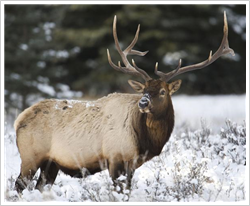

November 1st marks the beginning of the third rifle elk season in Colorado. With only four seasons total, the opportunities to harvest a cow or bull are winding down. The third season will run through the 9th of November with the fourth season starting on the 12th and running through the 16th.
While you may feel a certain desperation to fill that tag, it remains crucial to pay attention to what you are doing in the field. Don’t inadvertently stray outside of your designated unit when you’re hot on the trail of trophy bull. Avoid the temptation to "borrow" your hunting partner’s tag or allow him or her to shoot an animal for you and use your tag. Remember to properly tag your harvest and make use of the meat to the best of your ability. The officers with the Division of Wildlife in Colorado know that corners sometimes get cut during the later part of the season and will be out in force.
It is important to remember that as a hunter, even one accused of a hunting violation, you have rights and a Wildlife Lawyer can help make sure you are afforded those rights. Call our offices to speak to a Wildlife Lawyer about questions you may have if you are given a ticket for a hunting violation.
10th Confirmed Mountain Lion since 2007 in Kansas
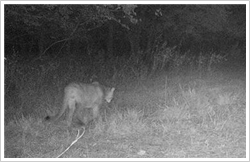

A deer hunter in Labette County, Kansas has captured a mountain lion on his trail camera, the first recorded sighting in two years in Kansas. Mountain lions are not a native Kansas species, but are known to traverse broad areas when looking for mates, new home ranges, or food.
Kansas Department of Wildlife, Parks and Tourism officials traveled to the site and confirmed the authenticity of the photo, taken September 24th of this year.
For now, KDWPT officials do not believe that mountain lions are staying and making a home in Kansas but rather, just passing through. This could change in coming years with a shrinking deer herd in neighboring Colorado.
Conservation Easements
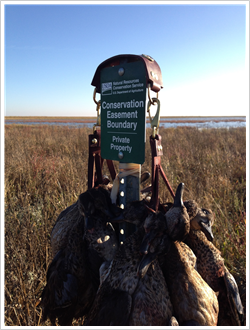

With public hunting access dwindling down in the United States every day, reserving vital ground for hunters and wildlife is more important than ever. Reserve programs like Conservation Easements offer private landowners the opportunity to maintain the integrity of their property and the hunting opportunities available there.
Through a partnership with government agencies like the USDA, private landowners receive incentives to enroll in the Conservation Easement program. Land enrolled in the program is then reserved for conservation purposes. Restricting development, tilling and other agriculture practices, livestock use, and water drainage helps to provide natural, wild habitat where game animals thrive. While these areas are still privately owned by the original landowner, these areas provide the skilled hunter with a unique opportunity to hunt and should not be overlooked when doing your scouting. Make sure to consult with the landowner about any restrictions placed on the land such as where you can drive or if you can plant a food plot for game.
To learn more about enrolling your acreage into Conservation programs and the benefits available for you, contact an attorney with Wildlife Lawyers. It is important to assess the pros and cons in your unique situation and what kind of contribution you wish to make to conservation, and a Wildlife Lawyer can help you make the right choice.
Invasive Species’ Effect on Local Trout
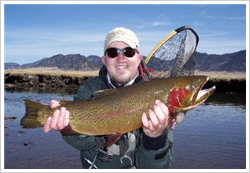

Invasive species are nothing new to hunters. The public has often turned to sportsmen when certain animals move in where they are not supposed to be. Missouri’s response to the increasing wild boar populations has been a policy of "Shoot on Sight," where no matter the season or type of equipment, hunters who see wild pigs are encouraged to harvest as many as possible. When rivers and ponds begin to clog with carp, bowfishing tournaments are a relatively common answer.
Anglers in Colorado are now faced with the arrival of predator fish that are choking populations of trout, as well as other non-game fish in local streams and rivers, as detailed by Scott Willoughby in his recent article in the Denver Post.
A number of endangered fish are at risk of extinction, and while I disagree with Mr. Willoughby about the enthusiasm of outdoorsmen to act to save an endangered species (in friendly discord of course) it is without a doubt the sportsmen who will answer the call to action.
With new regulations concerning certain species of fish that you are likely to encounter on an expedition, it is even more important to double-check the fishing regulations in your area. Game wardens and wildlife officials will take these new rules concerning invasive species very seriously and something as simple as "catch and release" could land you in trouble if you release an invasive species though legally caught.
